12 Kid Friendly Recipes from the Mediterranean Diet
By Bill Bradley, R.D.
Updated May 23, 2025
Kid Friendly Recipes the Mediterranean Way
Feeding kids can be one of the great joys—and challenges—of parenting. As a parent of a 6-year-old daughter, I’ve learned that helping children eat well is less about force and more about example, creativity, and consistency. That’s where the Mediterranean diet and it’s kid friendly recipes comes in. It’s naturally rich in the kinds of whole foods that kids need to grow, thrive, and develop a healthy relationship with food.
My goal is to blend some practical parenting tips with the Mediterranean diet philosophy and give you kid friendly recipes that our daughter and other kids love. We hope to help even picky eaters embrace vegetables, whole grains, healthy fats, and new flavors—while keeping mealtime enjoyable and stress-free.
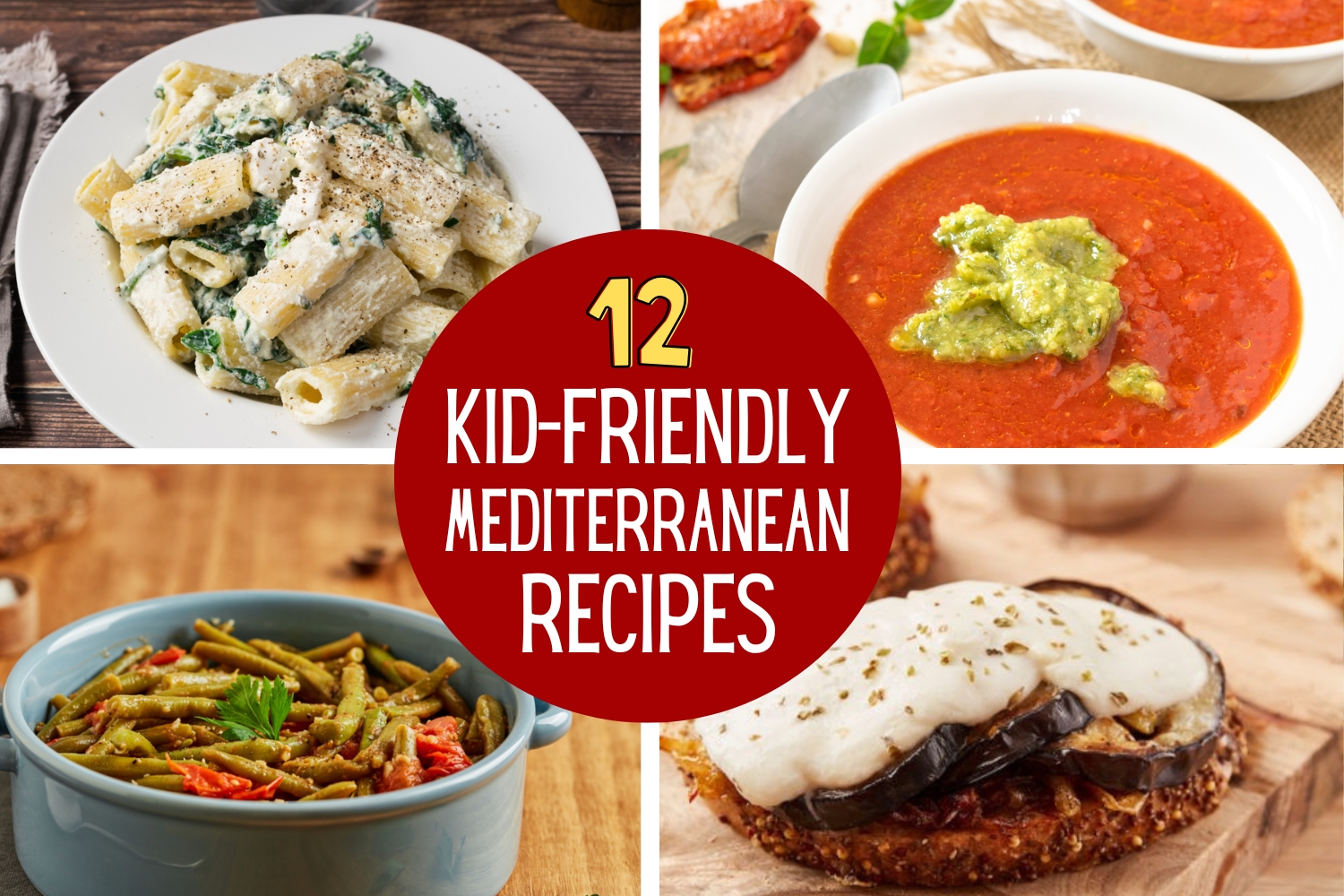
What I’ve Learned from Feeding our Daughter Over the last 6 years.
1. Kids Watch What You Eat
If you want your child to eat a healthy diet, you need to eat that way too. There’s no hiding when it comes to what our kids observe. Modeling healthy eating is one of the most powerful tools we have.
2. Introduce All Kinds of Foods Early
Don’t assume your child won’t like something just because it seems too “grown-up.” Our daughter has gone through phases—she has tried and loved artichokes and olives and even enjoys sauerkraut now. Early exposure is key.
3. Try the “No Thank You Bite” Rule
We have a simple rule: if there’s a new food on the plate, our daughter takes at least one bite before saying “no thank you.” It helps build familiarity and eventually leads to acceptance—even for things like sautéed greens or arugula (yes, she eats arugula!). We do the “No Thank You Bite” even for foods she has said no to before as she often says yes at some point.
4. Introduce Bitter Foods Early
Bitter vegetables like arugula are incredibly healthy, especially for the gut microbiome. The earlier they’re introduced, the more likely your child will accept them as a normal part of their diet.
5. Build Microbiome Diversity with Fruits and Veggies
A healthy gut starts with variety. Try to serve at least 20–30 different fruits and vegetables each week. Keep track on a whiteboard—every time your child likes a fruit or veggie, add it to the “favorites” list so you remember to buy it.
6. Blend in the Good Stuff
Sometimes vegetables need to be hidden in plain sight. I often sauté onions, spinach, and peppers, then puree them and add to tomato sauce for pasta. Our daughter now requests “green tomato sauce” without realizing it’s packed with vegetables she’d otherwise refuse.
7. Soups and Smoothies Are Your Friends
Pureed vegetable soups and fruit-packed smoothies are nutrient powerhouses and often win over kids. They’re a great way to include ingredients kids typically reject in solid form.
8. Strategic Chocolate Rules
We have a strict “no chocolate after 2 p.m.” rule—otherwise, bedtime becomes chaos. To meet her sweet tooth earlier in the day, we bake banana nut muffins with a few chocolate chips. It satisfies her craving without the crash.
9. Keep Junk Out of the House
Out of sight, out of mind. We don’t keep ice cream or highly processed treats in the house. Treats are for special outings or visits to grandparents’ homes.
10. Let Kids Listen to Their Hunger Cues
If she says she’s full—even if it seems like she barely ate—we let her stop. Teaching intuitive eating is just as important as serving healthy meals.
Why the Mediterranean Diet Works for Kids
The Mediterranean diet is based on whole, unprocessed foods: fruits, vegetables, whole grains, legumes, fish, olive oil, and modest amounts of dairy and meat. It’s rich in healthy fats and packed with fiber and antioxidants. Some key benefits for kids include:
- Supports brain development (thanks to omega-3s and healthy fats)
- Encourages a healthy weight and prevents chronic diseases
- Builds a strong gut microbiome
- Develops an adventurous palate
- Making Mealtime Fun (and Stress-Free)
- Let kids help cook: They’re more likely to try what they’ve helped prepare.
- Serve family-style: Let them pick what goes on their plate.
- Use fun plates and shapes: Cookie cutters can turn cucumber slices into stars.
- Have themed nights: “Greek Night” or “Build Your Own Bowl” makes meals feel like an event.
Final Thoughts: Raising Adventurous Eaters with Kid Friendly Recipes
Getting kids to eat healthy doesn’t happen overnight—but with patience, creativity, and a Mediterranean mindset, it can become second nature. Start with small changes, get kids involved, and most importantly, make it fun. Whether it’s a colorful smoothie or a green tomato sauce, every bite is a step toward a lifetime of good health.
Spaghetti Alla Portofino
In our house this dish is “red pasta.” Sweet tomato passata simmers with garlic and basil, hugging each strand of spaghetti. I sometimes blend in a roasted pepper for extra vitamin C; Sophia never notices.
Nutrition note: Whole-wheat noodles add fiber. Lycopene in cooked tomatoes supports eye health and immunity.
Swap idea: Use shells for toddlers or stir in white beans for protein.
Mediterranean “Fried” Chicken Sheet Pan Dinner
Seasoned chicken tenders bake with asparagus and cherry tomatoes so protein and produce arrive together. Olive oil creates crunch that rivals fast-food nuggets without deep frying.
Caramelized Onions and Eggplant Montaditos
Onions and eggplant cook down to a sweet jam. Spread on toasted baguette slices, top with mozzarella and broil until bubbling. The flavor says pizza not vegetables.
Time saver: Make a double batch of topping and store in a jar for eggs or quesadillas
Tomato Soup with Oregano Pesto
Classic comfort meets herb garden. Sauté garlic and sun-dried tomatoes, add ripe tomatoes and finish with an oregano pesto swirl. Freeze leftover pesto in ice-cube trays.
Lunchbox trick: Fill a thermos with hot soup and pack grilled cheese sticks for dipping.
Zucchini Fritters with Feta, Cheddar, Mint and Parsley
Foods of Crete co-author Koula Barydakis designed these fritters during a zucchini boycott at home. Herbs and cheese hide a mountain of zucchini beneath a crisp crust. Pan-fry or air-fry.
Prep ahead: Shape raw batter on a parchment-lined sheet, freeze, then bag. Cook from frozen.
Black Bean Stew
A Budget hero. Black beans simmer with cumin and chili powder. A lime squeeze brightens everything. I have served this to hundreds of schoolchildren; there are never leftovers.
Batch strategy: Cool, flatten in freezer bags and freeze. Thaw under running water for a fast dinner.
Tuna Patties Fried in Olive Oil (France)
These French-style tuna patties are quick, budget-friendly, and adaptable to whatever herbs or ingredients you have on hand. Crispy on the outside and tender inside, they’re perfect with a salad, dipped in yogurt sauce, or even served as mini burgers for a light, flavorful meal.
Grilled Chicken and Hummus Pita
Juicy chicken, creamy hummus and crunchy pickles in a warm pita. Slice quarters for small hands. Wrap in parchment for road trips.
Leftover magic: Turn extra chicken into yogurt herb salad for lettuce wraps.
Rigatoni with Creamy Ricotta and Spinach
Velvety ricotta and wilted spianch fills every tube of pasta. Chop spinach finely if needed. Reheat leftovers in a thermos for next-day lunch.
Protein boost: Add diced chicken breast or lentils; flavor stays creamy.
Italian Green Beans with Tomatoes and Garlic
Green beans simmer in a tomato garlic sauce until tender and pizza-like. Cut beans into half-inch pieces to help them blend in.
Zero waste tip: Blend leftover beans and sauce into tomorrow’s marinara.
Cod Baked in Tomato Sauce
Mild cod baked tomatoes and peppers. Sophia requested thirds. Serve with star-shaped pasta for twisty fun.
Allergy option: Use firm tofu cubes if fish is not an option.
Creamy Cauliflower Soup with Potatoes and Sesame Oil
Cauliflower and potato puree into a silky base. Sesame oil and black sesame oil adds nuttiness. Freeze child portions in silicone muffin cups.
Texture swap: If your child prefers chunky soups, reserve a small handful of steamed cauliflower florets and diced potatoes before blending. Stir them back in after puréeing to create bite-size “treasure pieces” that keep the soup interesting without compromising its silky feel.
Mediterranean Diet Food List Printable PDF
This Mediterranean diet food list is available as a PDF file, and I recommend printing it out and putting it on your fridge. You will always have inspiration to eat these healthy foods whenever you go into the fridge.
If you’re looking for recipes to make with these foods, check out our extensive collection of Mediterranean Diet Recipes.
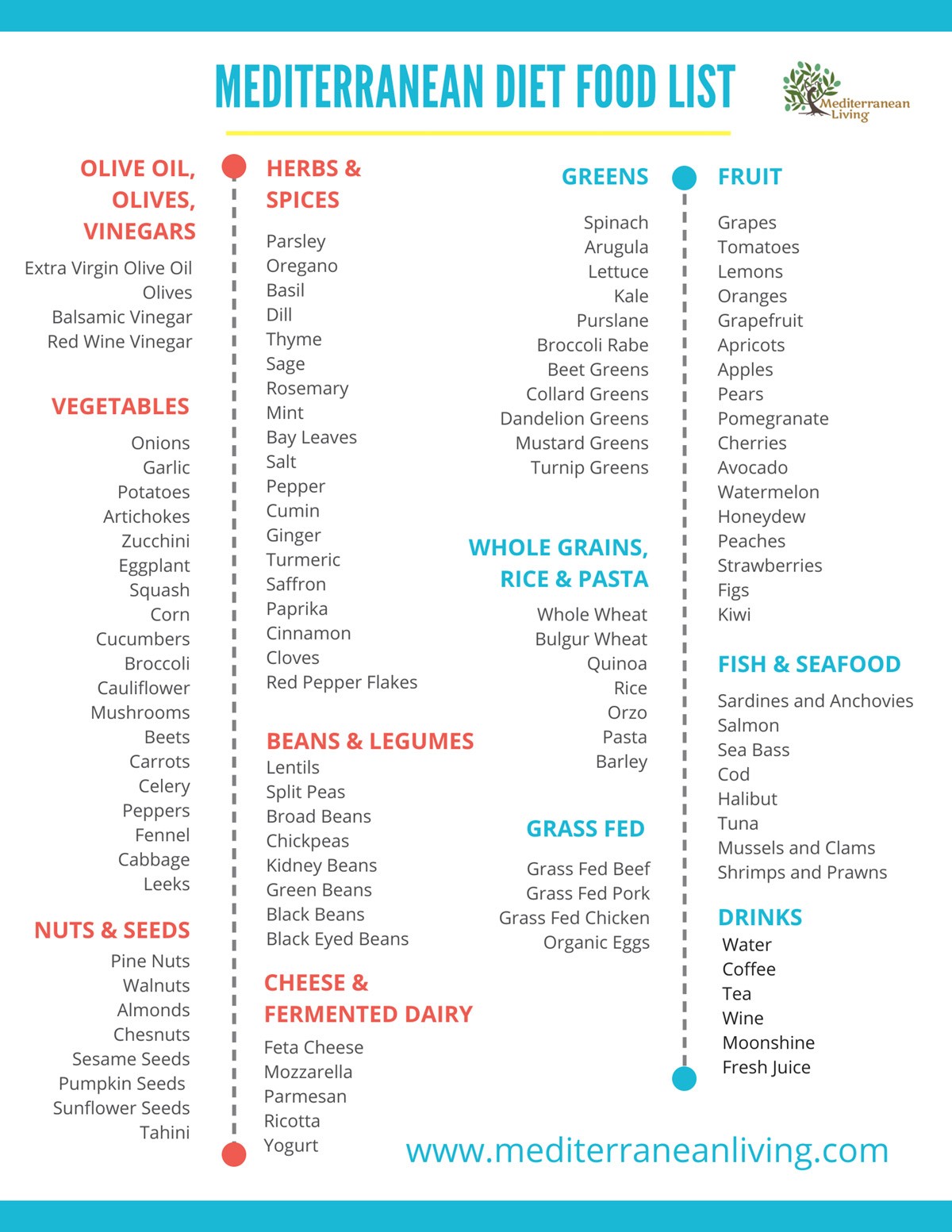








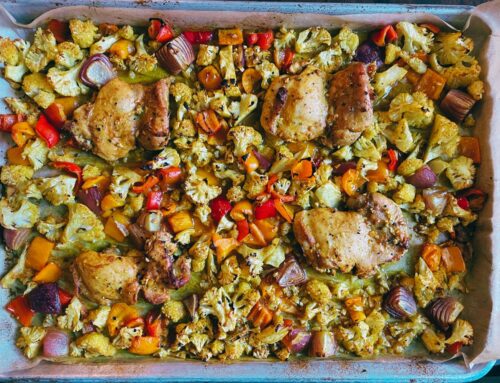
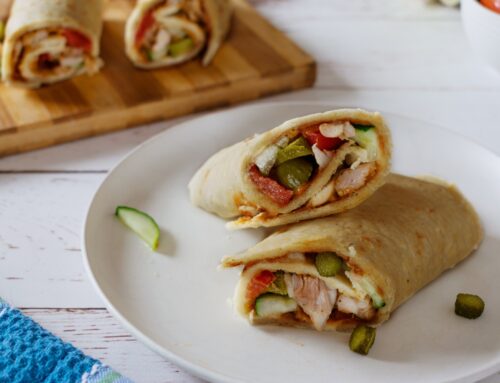
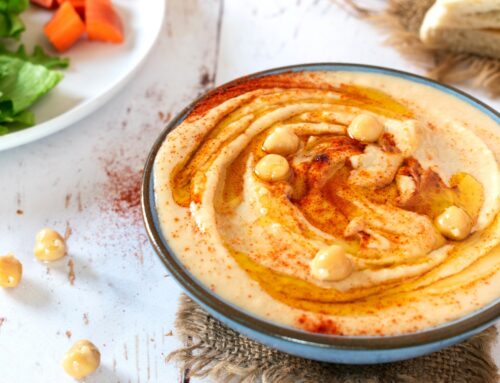
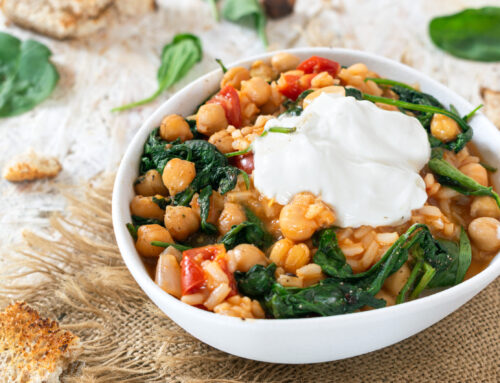
Mrs. C says:
Delphine says:
Lola says: